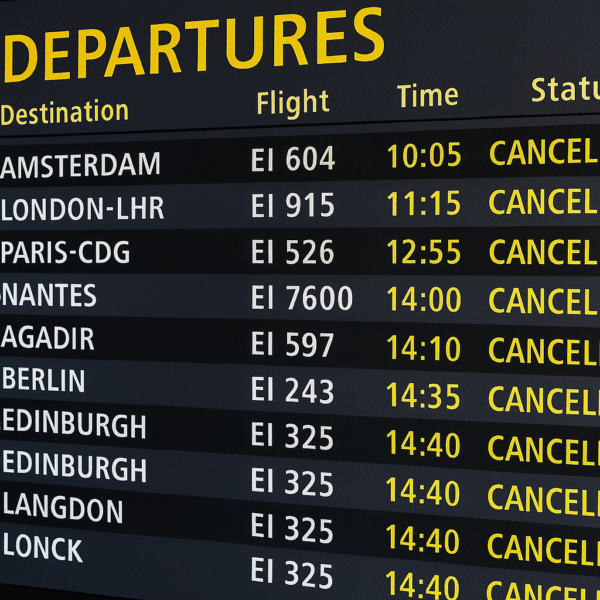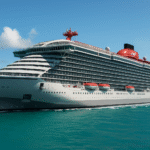Cruise tourism has entered a new golden age. Royal Caribbean is leading the way with its Icon Class ships, a series of mega-vessels designed to reshape luxury travel. The flagship, Icon of the Seas, already holds the title of the world’s largest cruise ship. With more ships joining the fleet, the brand is setting new benchmarks for tourism in the Caribbean and beyond.
These ships are more than floating hotels. They are floating cities, carrying between 5,600 and 8,000 passengers. With endless dining options, record-breaking waterparks, and world-class entertainment, they promise unforgettable experiences. For travelers, the Icon Class marks the future of vacations at sea.
The Icon Class Expansion
The journey began with Icon of the Seas, which entered service in 2025. Its debut captured global attention, quickly becoming a favorite for Caribbean travelers.
In August 2025, the Star of the Seas joined the family. It offers Caribbean itineraries that include Royal Caribbean’s private island, Perfect Day at CocoCay, a destination designed exclusively for its guests.
More ships are on the horizon. In 2026, the Legend of the Seas will launch with Category 6, the largest waterpark at sea. Families and thrill-seekers can look forward to slides, wave pools, and water rides unmatched by any other cruise line.
The fourth Icon Class ship is under construction and will debut in 2027. Stretching over 1,000 feet, it will extend Royal Caribbean’s vision for immersive mega-cruise experiences. Together, these vessels will not only attract millions of passengers but also strengthen tourism for the ports they visit.
The Rise of Mega-Cruise Ships
Royal Caribbean is not alone in this trend. Across the cruise industry, ships are getting larger to meet passenger demand.
Norwegian Cruise Line launched the Norwegian Aqua in April 2025, with space for 3,600 guests. Four larger vessels, each carrying 5,000 passengers, are already on order for delivery starting in 2030.
MSC Cruises also entered the race with the MSC World America, a 6,762-passenger ship now sailing from Miami. It departs from the new MSC Miami Cruise Terminal, the largest in North America. Caribbean itineraries highlight the region’s growing importance as the hub of global cruise tourism.
The competition between cruise lines is driving innovation. Each company is adding bigger ships, more attractions, and new technology to meet rising expectations.
Caribbean Tourism Benefits
The Caribbean is the biggest winner of this boom. Islands like St. Thomas, Cozumel, Nassau, and Labadee are preparing for record-breaking passenger numbers. Every docking brings thousands of tourists eager to explore local beaches, markets, and cultural attractions.
The economic impact is enormous. More passengers mean more jobs for tour guides, restaurant staff, and shop owners. Ports are expanding to welcome larger ships, while local businesses are thriving thanks to the influx of visitors.
But the benefits are not limited to the Caribbean. European destinations, especially around the Mediterranean, are also preparing to host these mega-ships. From Barcelona to Athens, cruise passengers will soon enjoy itineraries that mix Old World history with modern luxury at sea.
Innovation at Sea
What makes the Icon Class special is not only size but also the passenger experience. These ships are built to deliver variety, entertainment, and relaxation all in one place.
Guests can enjoy luxury spas, themed shows, and fine dining. Families can spend days at massive waterparks or try out innovative activities like surf simulators and sky-diving pods. Nightlife offers Broadway-style performances, concerts, and immersive cultural experiences.
Technology also plays a big role. Passengers benefit from high-speed Wi-Fi and mobile apps that allow them to book shows, reserve dining, and plan excursions seamlessly. Cruise lines understand that today’s travelers want both adventure and convenience.
A Boost for Global Tourism
The rise of mega-cruise ships is not just about onboard luxury. It is reshaping global tourism. Ports that can host these giant vessels are becoming tourism powerhouses.
For North America, Miami is already the cruise capital of the world. With new terminals and larger ships, the city is strengthening its dominance. In Europe, Mediterranean cities are expanding port facilities to capture the surge in cruise tourism.
Destinations that adapt quickly to the demands of mega-ships will see the biggest rewards. From the Caribbean to Europe and beyond, the economic benefits are expected to grow year after year.
The Future of Cruising
As the Icon Class expands, it signals the future direction of the cruise industry: bigger ships, more destinations, and richer experiences. Tourists want more than transportation; they want a complete lifestyle at sea.
Royal Caribbean and its competitors are responding with ships that feel like cities, offering something for everyone. Whether you want family fun, luxury dining, thrilling activities, or cultural immersion, these ships provide it all.
The growth of mega-cruise ships also highlights the increasing demand for Caribbean tourism. With more travelers booking vacations at sea, the region will continue to thrive as the world’s top cruise destination.
Conclusion
The launch of the Icon of the Seas and its sister ships represents a turning point in cruise tourism. With their size, innovation, and range of experiences, they are redefining what it means to vacation at sea.
From the Caribbean’s turquoise waters to Europe’s historic coastlines, these ships will bring millions of travelers to new destinations. At the same time, they will boost local economies and create opportunities for communities worldwide.
For passengers, the promise is simple: a journey like no other, on ships that are bigger, bolder, and more luxurious than ever before.
For more travel news like this, keep reading Global Travel Wire
















